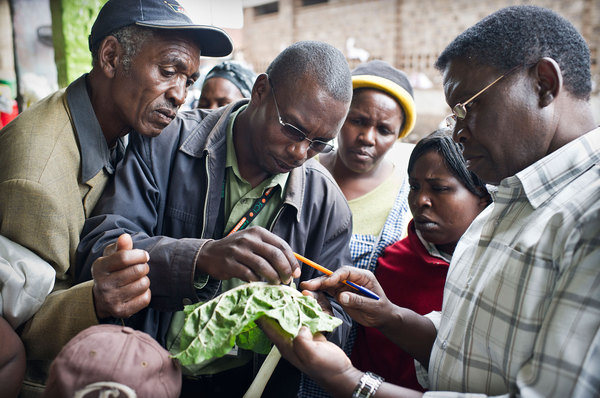Earthworm-farmer friendship, redefined
Earthworms are known as farmers’ best friends because of the multitude of services they provide that improve soil health and consequently plant health. The density of earthworms in the soil is considered to be a good indicator of a healthy soil because they improve many soil attributes like structure, water holding capacity, moisture content etc.,…
Epigenetics – a new dimension to understanding plant disease
The history of diseases that have affected a plant can determine the ability of its progeny to cope with similar diseases. Studies have revealed that, in many cases, progeny of a plant that was diseased develops tolerance to similar stresses in just a few generations, far too quick to be explained by chance mutations. It…
Quorum-sensing disruption, a new tool for disease management?
A new study by Chernin et al. has found that volatile organic compounds produced by certain Plant Growth Promoting Rhizobacteria (PGPR) can disrupt bacterial cell-cell communication (quorum sensing) in a number of plant pathogens including Agrobacterium, Chromobacterium, Pectobacterium and Pseudomonas. Application of PGPRs could in future be used as a new disease management strategy.
Managing deoxynivalenol (DON) contamination in Fusarium head blight affected wheat
Fusarium spp. (particularly F. graminearum) causes a serious disease on wheat called Fusarium head blight. The disease affects the quantity and quality of grain and under favorable weather conditions can cause more than 45% yield losses. Symptoms include the appearance of tan or brown discoloration on spikelets resulting in white, shriveled kernels. Such infected kernels…
Understanding and managing aflatoxicosis outbreaks in Kenya
Aspergillus flavus and A. parasiticus are important fungal pathogens that infect a wide range of cereals, oil seeds and nuts. They produce toxic metabolites called aflatoxins (mycotoxins with carcinogenic and teratogenic properties) that can contaminate food products. Although strictly regulated around the world, aflatoxin contamination in developing countries is poorly regulated. In addition, limited management…
Improved understanding of Striga resistance in rice
A group of scientists from the Netherlands, UK and Africa have studied upland NERICA rice cultivars to identify those that exhibit multi-level striga resistance. In two separate research papers, the 18 NEw RICe for Africa (NERICA) cultivars and their parents were screened for pre- and post- attachment striga resistance. One particular cultivar NERICA 1 was…


